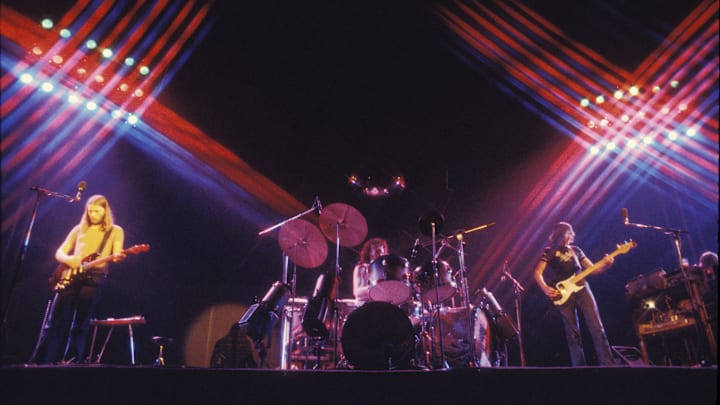“Astronomy Domine” from The Piper at the Gates of Dawn (UK release, 1967)
Pink Floyd had released a couple of successful singles before their debut album came out in ’67. On that first album, listeners were greeted with a cacophony of spacey sounds from the first needle drop. Gradually, out of the morass, a song emerged. It was “Astronomy Domine,” featuring a surprisingly sweet paired vocal from Barrett and Wright.
At various points, Barrett’s wandering guitar riffs, Waters’ echoey bass, and Wright’s organ rise to the fore. And Barrett’s lyrics, which he tended to choose more for their sonic quality than for whatever meaning they might convey, simply become another musical element.
When you flipped the album over, you got another, even more, extravagant exploration of what came to be known as “space rock,” with the nine-and-a-half minute “Interstellar Overdrive.” That song, with its wild forays into free jazz and beyond, was ideally suited for live performance and it would become a highlight of many a live show. The somewhat more self-contained “Astronomy Domine” fits better on a studio album.
“See Emily Play” from The Piper at the Gates of Dawn (US release, 1967)
When Piper was released in the USA, a few months after its UK launch, ”Astronomy Domine” was missing. So were a couple of other tracks. In their place was a single that had been released earlier that year, “See Emily Play.” It was just as trippy and psychedelic in many ways as Floyd’s spaciest songs. But it was also much more of a traditional single, with a catchy pop melody and lyrics that were pushed forward in the mix so that they could be easily understood.
This was Syd Barrett at his best, picking up some San Fran flower power folk-pop influences and filtering them through his unique sense of what pop music could be. Barrett contributes a lot on guitar, throwing some slides into the mix, but this was the first and most powerful early sign of exactly what Richard Wright was capable of. His organ is all over the place, playing both melodic lines and fill.
Then, seemingly out of nowhere, he’s riffing on a harpsichord. “See Emily Play” was a genuine hit that helped kickstart the band. The success seemed to have an effect on Barrett – and it was not a good effect. Many early Floyd fans have bittersweet associations with “Emily,” because it simultaneously shows off what Barrett could accomplish, and how that awesome potential never went much farther.
